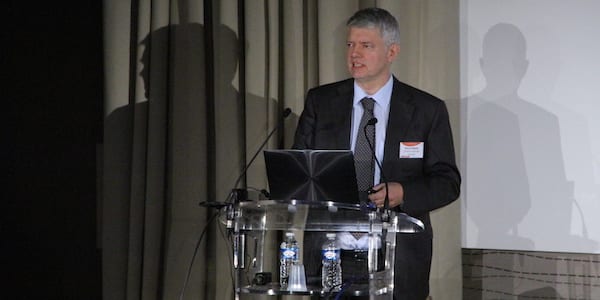
Boaz Tamir on why success does not come down to chance
OPINION – The rise and fall of organizations does not depend on chance or bad luck. It generally stems from a fundamentally flawed strategic approach that fails to define a purpose, alienates workers and ignores customers.
Words: Boaz Tamir, President, Israel Lean Enterprise
Last month, it only took 10 days for Teva Pharmaceutical Industries’ stock to lose nearly half of its value. A series of unsuccessful purchases led to a staggering loss of $15 billion, for the company and the pockets of the company’s stockholders. This is a case of an ostensibly brilliant plan turning into a strategic failure. But how did this happen?
In analyzing the reasons behind Teva’s collapse, most commentators have forgotten to point out that, up until yesterday, those same elements appeared to be enablers of the Israeli company’s success.
It’s important to recognize that the roots of this failure are not anecdotal: they are not to be found in unexpected events (such as changes in the drug market in the United States) or in sheer bad luck or carelessness in acquiring companies (of which Mexican manufacturer Rimsa is the probably the most famous example). The cause of the fall was management’s insistence on a strategy based on aggressive mergers and acquisitions, whose side effects – and the customers’ response to it – Teva failed to monitor. This was a major miscalculation on the part of the company’s leaders, who seem to have been navigating using an old map of management thinking and the business world.
Had they used an up-to-date navigational system, Teva’s top managers would have discovered that a strategic plan that intends to strengthen the company’s status in the market but ignores customers is ineffective. Research shows that the value of acquiring companies goes down in an inverse relationship to that of those purchased. One of the reasons for this is that the price of an acquisition (which few see, let alone measure) actually includes brain drains, damage to trust and morale, a hindrance for excellence, and the negative effect of prioritizing the wrong things (profit over people, for instance). How many times do we see successful knowledge workers in companies being acquired simply take the money (bonuses, severance payments, or options) and run? At the same time, employees in the acquiring company can feel abandoned by management, which prefers investing in newcomers to developing its own skills, problem solving capabilities, and human capital.
Of course, predicting the outcome of a business move is not easy, but there are a few questions that might help us to evaluate our chances of having a strategic plan succeed. Is the purpose of this move clear? Does this move create value for our customers? Are employees and line managers both engaged and committed to this move? Needless to say, the answers to these questions can’t be found in an air-conditioned office. They must be sought out at the gemba, through close examination and deep dialogue with everybody who will be affected by the change.
It seems to me that Teva decided to defend itself from a hostile takeover (by the Mylan Corporation) by turning to aggressive purchasing. While this approach might have served the interests of management, it is difficult to see what value it produced for the company’s customers. (In Gemba Walks, Jim Womack pointed to a similar, flawed trend at Toyota in 2008, which ultimately did not bring about any profit and actually damaged the company.)
In my view, Teva’s mergers and acquisitions policy suffered from two strategic limitations:
- Management and strategic advisors assumed they could predict the response of the market, and scarce humility in approaching something as foggy as the future. To obtain even partial information on how the market will respond to a business move, management must establish multi-disciplinary teams (marketing, research and development, production, service, operations, finances and economy) and run experiments to examine the components of the plan and their effects on customer value, people development, and performance.
- The approach was based on either taking over parts of the market or taking out competitors (as in the purchase of Allergan, for example), rather than on defining a clear purpose with customer value at its heart. This disconnected management from the organizational base (values and staff), hindering organic growth obtained through people development and a respectful attitude.
Along the way, Teva has clearly lost touch with its purpose, its raison d’être. Lean enterprises know that reinventing and transforming themselves requires organically developing people capabilities. Recently, Michael Ballé, Dan Jones, Jacques Chaize and Orry Fiume went one step further, asserting in their new book that a lean transformation is achieving by adopting a strategy that has learning at its core. Indeed, respect for people and a commitment to continuous learning and developing autonomous teams both lie at the heart of lean thinking, and we see no other way an organization can deal with changing realities (of which an acquisition is an expression) while continuing to provide value to customers.
Traditional management must become interactive strategic management. This requires changing the DNA of a company – a challenging, but ultimately necessary shift. If you are up for it, John Shook’s words are something to cherish: “It’s easier to act your way into a new way of thinking, than to think your way to a new way of acting.”
THE AUTHOR

Read more


FEATURE – Reflecting on Nomura-san’s recently published book on radical quality improvement, the author encourages us to embrace the spirit of “Dantotsu” to meet the challenges we face as a society.


FEATURE - Projects or programs? The authors discuss why Lean Thinking should go beyond piecemeal operational improvements, as a transformative strategy that balances today’s demands with future adaptiveness.


VIDEO INTERVIEW - We spoke with Toyota Motor Europe's CIO at the Lean IT Summit about hoshin and IT, the application of the agile methodology, and the power of coaching.



THE LEAN BAKERY – In the last episode of our video series, we learn how 365 is using an impressive visual management system to manage the accounting and human resources functions.

